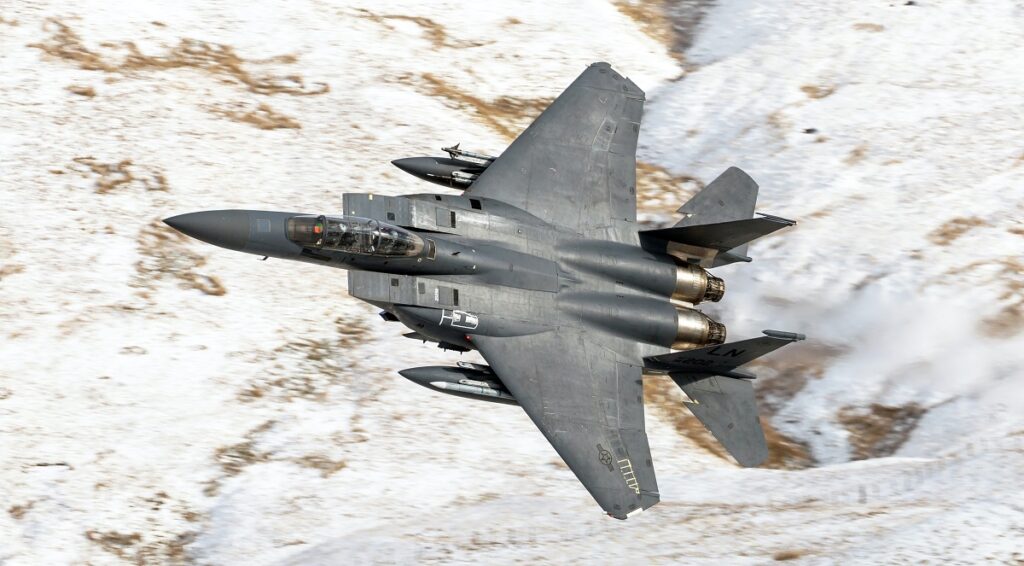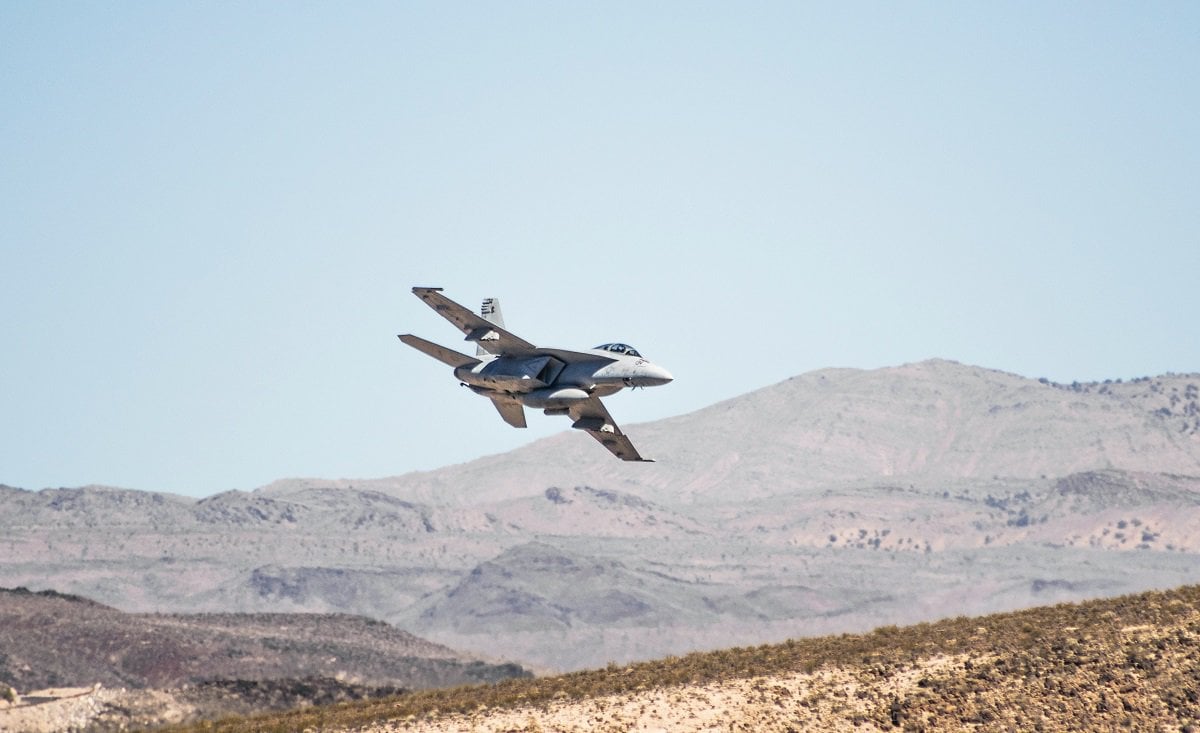A Military Operations Area, often abbreviated as MOA, is a type of controlled airspace intended for use by military aircraft. It is often, though not always, used for activities such as training maneuvers, high-speed operations, or testing of military hardware. The general aviation community often questions the legality and safety of traversing these spaces. So, let’s take a deep dive into MOAs and how pilots can navigate them safely. But first:
Can You Fly Through an MOA?
Yes, you can fly through a Military Operations Area (MOA). However, it’s important to exercise caution as these areas are often active with military aircraft conducting training and maneuvers. Pilots are encouraged to contact the controlling agency for information about any ongoing activities in the MOA before entering it.
Now, let’s get into the details.
What Is a Military Operations Area?
A Military Operations Area is a type of Special Use Airspace designated for military maneuvers and other activities that need to be separated from general aircraft traffic. This separation is not absolute, as civilian aircraft are not prohibited from entering MOAs. However, these civilian aircraft are advised to exercise caution due to the potential hazards associated with the military activities conducted in these areas.
Military activities within MOAs can include a wide range of operations. These include but are not limited to, air combat maneuvers, interception practices, aerobatics, and formation training. Such activities may involve high-speed, rapid changes in direction, and could pose potential risks for non-participating aircraft.
MOAs possess both horizontal and vertical dimensions. They are outlined geographically with specified latitudes and longitudes. They have a designated range of altitudes, usually above 3,000 feet Above Ground Level (AGL). The structure and volume of an MOA are integral in understanding where they exist and which sections of airspace they occupy.
Aeronautical charts typically depict MOAs. They are designated with a name and are outlined by hashed lines, accompanied by information about their vertical limits and controlling agency.

Federal Aviation Administration (FAA) Rules and Regulations
There is no specific section in the Federal Aviation Regulations (FARs) that addresses the rules of flight within Military Operations Areas (MOAs) in detail.
However, there are certain sections in the FARs that address the broader issue of flight in different types of airspace. Title 14 of the Code of Federal Regulations (14 CFR), also known as the Federal Aviation Regulations (FARs), covers various aspects of civil aviation. In particular, Part 91 of the 14 CFR, which is designated for general operating and flight rules, provides guidance on flight in different types of airspace.
One of the most relevant sections in this context is 14 CFR 91.103, which requires pilots to familiarize themselves with all aspects of a flight, including information on available airspace. In other words, pilots should make themselves aware of any MOAs along their planned route and avoid them if necessary.
The FAA’s Aeronautical Information Manual (AIM) is also an important document that provides additional guidance on this topic. According to the AIM, pilots are not prohibited from flying through MOAs, but they are advised to contact the controlling agency to get information on possible traffic advisories or suggested routings.
This answer should not be taken as definitive legal advice, and pilots should always ensure they have the most up-to-date information from the FAA and other reliable sources.
See the AIM for more information about Special Use Airspace.
Knowing When You Can Fly Into Military Operations Areas
While FAA regulations do not prohibit civilian aircraft from entering or flying through an MOA, it is highly recommended to exercise extreme caution, primarily when the MOA is active. This is due to the potential risks posed by fast, maneuvering military aircraft and their activities.
Notices to Air Missions, or NOTAMs, are a critical source of real-time aeronautical information. They often contain data on MOA activation times and other changes that pilots must be aware of before planning their route.
Air Traffic Control (ATC) is a valuable resource for pilots planning to transit near or within an MOA. Communicating intentions and receiving traffic information can be critical in maintaining situational awareness and preventing potential conflicts.
The FAA offers guidance on collision avoidance, which becomes particularly pertinent when operating in or around MOAs. This includes advice on visual scanning, understanding aircraft blind spots, and the use of onboard traffic alert systems.
Responsibilities of the Civilian Pilot
A successful flight requires meticulous planning and risk assessment. It is a pilot’s responsibility to be aware of any MOAs along the planned route and to ascertain if they will be active during the proposed flight time.
Familiarity with communication procedures is a significant aspect of flying in the vicinity of an MOA. This includes maintaining continuous communication with ATC and promptly reporting any observed or forecasted dangerous conditions.
Continuous training and education are necessary to maintain a high level of situational awareness when flying, especially in or near complex airspaces like MOAs.
The Potential Dangers and Risks
Flying through active MOAs involves several risks. The most immediate is the danger of a mid-air collision with fast, maneuvering military aircraft. Additionally, civilian aircraft could inadvertently disrupt military operations, thereby potentially compromising safety.
There may be legal implications if a pilot deliberately or negligently enters an active MOA without following the proper protocols. This can potentially lead to penalties or loss of licensing privileges.

Mitigation Measures
In order to mitigate potential risks and dangers associated with flying through an MOA, the following measures can be undertaken:
- Thorough Pre-Flight Briefing: Before initiating any flight, a comprehensive briefing should be conducted. This includes assessing all relevant aspects such as weather conditions and the aircraft’s condition. It should also include potential airspaces along the route like MOAs and their schedules of activation.
- Checking MOA Schedules: MOAs aren’t active at all times. The schedules are often published in Notices to Airmen (NOTAMs) or can be obtained from Flight Service Stations (FSS). This information can be utilized to plan the flight during times when the MOA is inactive.
- Communications with ATC: Air Traffic Control can provide real-time information about the status of an MOA. Contacting ATC before entering one, even if it’s not required, can help pilots receive crucial traffic information or routing advice.
- Utilizing Onboard Collision Avoidance Technology: Many modern aircraft are equipped with Traffic Collision Avoidance Systems (TCAS) or similar technology. These systems can provide real-time information about nearby aircraft, including military aircraft operating within a MOA.
- Real-time Information through Advanced Technology: Digital aeronautical charts and other flight planning software can provide real-time information about active airspaces, including MOAs. By using these tools, pilots can stay updated and make informed decisions during flight.
- Continuous Training and Education: Continued training on airspace structure, including MOAs, and regular updates on regulations and procedures, can help pilots maintain a high level of proficiency and preparedness, making them better equipped to handle flight in or near MOAs.
By following these measures, pilots can significantly mitigate the potential risks associated with flying through an MOA.
Incidents Involving Military Operations Areas
There are few publicly accessible incidents involving civilian aircraft and MOAs. However, we can still learn from general cases involving interactions between civilian and military aircraft. These incidents underline the importance of proper flight planning, risk assessment, and adherence to FAA regulations.
- Near mid-air collisions: There have been numerous reported instances of near mid-air collisions between military and civilian aircraft, though not necessarily within an MOA. These incidents underscore the importance of maintaining strong situational awareness, especially when flying near areas of high military activity.
- Incursions into active SUA: Some incidents have been reported where civilian aircraft inadvertently entered active Special Use Airspace (SUA), including MOAs, causing disruptions to military exercises. These instances highlight the importance of thorough pre-flight planning, including checking Notices to Airmen (NOTAMs) for airspace activity and closures.
- Miscommunications or misunderstandings: There have been situations where miscommunication between civilian pilots, military personnel, or air traffic control has led to conflicts or potential safety risks. These incidents stress the need for clear and precise communication when operating in or near areas of military activity.
To learn from these incidents, it’s important for civilian pilots to thoroughly plan their flights, understand, and respect SUA restrictions. They should maintain clear communication with air traffic control and utilize all available resources to maintain situational awareness. This includes using tools like digital aeronautical charts and onboard collision avoidance systems. Safety should always be the top priority when flying, whether in a MOA or any other type of airspace.
Conclusion
While it is not illegal to fly through an MOA, doing so comes with inherent risks and responsibilities. It’s important for pilots to engage in meticulous flight planning, maintain situational awareness, use available resources, and adhere to all regulations and guidelines to ensure safety. Balancing the needs of military operations and civilian aviation requires cooperation, communication, and a commitment to safe flying practices.
References
For more information, please refer to the Federal Aviation Regulations, Aeronautical Information Manual, and the FAA’s guides on aviation safety and collision avoidance. Aeronautical charts, both paper and digital versions, provide specific details about MOAs and should be a staple in every pilot’s pre-flight planning process.
Recent Posts
Learn real-world ATC communication examples, proper pilot-controller phraseology, and practical strategies to improve your air traffic control communication skills for safer flying.
Learn what a SIGMET is in aviation, how it differs from AIRMETs, and why Significant Meteorological Information is critical for safe flight planning and operations.


